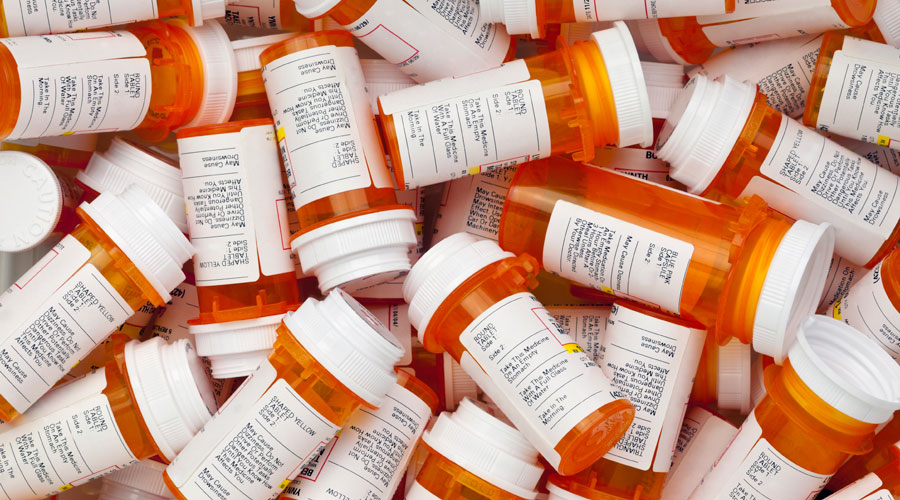Inside: Use a keen eye and CDC best practices to recognize and prevent drug abuse.
The Centers for Disease Control and Prevention (CDC) has classified prescription drug abuse as a national epidemic due to the staggering amount of abuse in recent years.
Since 1999, 750,000 people have died of drug overdoses, and in 2018, two out of every three overdose deaths involved opioids. In 32 percent of those opioid overdose cases, a prescription opioid was involved.
Healthcare professionals play a vital role in preventing prescription drug abuse because of their close relationships with patients. More than 84 percent of Americans had contact with a healthcare professional in the past year, according to the CDC. And patients visit the pharmacy an average of 35 times per year according to a recent Amerisource Bergen survey, giving pharmacists a unique opportunity to build rapport with their patients and recognize when things aren’t right.
As the gatekeepers for prescription drug access, independent community pharmacies play a big part in combatting prescription drug abuse. Here are five ways you can help prevent prescription drug abuse.
1. Look for red flags
Watch out for potential indicators of prescription drug misuse or abuse. Exercise sound professional judgment by looking for potential “red flags” of drug abuse.
These red flags can include:
Early refills
Notice when patients request refills earlier than their prescription is due.
Indication of forgery
Look for signs of fake prescriptions, such as misused abbreviations, misspelled medication names, or a photocopied prescription.
Altered prescriptions
Prescriptions with multiple ink colors or handwriting styles should be given a second look.
Payments in cash
Patients who insist on paying for their prescriptions in cash should be given further scrutiny.
Long distance
Watch for prescriptions from a long-distance or out-of-state provider.
Scope of practice
Look for prescriptions written to treat a condition that’s not a doctor’s known specialty.
Multiple prescribers
Patients may go to multiple doctors in order to acquire more opioids than would otherwise be prescribed.
Antagonistic drugs
Watch for prescriptions written for antagonistic drugs, such as prescriptions for both a depressant and a stimulant simultaneously.
The DEA requires pharmacists to scrutinize the legitimacy of controlled substance prescriptions as a normal part of the practice. Every opioid prescription that crosses your counter should get extra attention before it is filled.
2.Verify prescription information and collaborate with physicians
You fill prescriptions daily, and part of responsibly filling prescriptions is to check the validity of prescriptions and to verify physicians’ licenses in your state.
When verifying prescription information, pay attention to:
- Name of the drug prescribed
- Date the prescription was issued
- Number of refills the physician has approved
- Amount and dosage of the drug prescribed
- License and credentials of the prescribing practitioner
Check the prescription drug monitoring program (PDMP) and patient records to see the patient’s history with controlled substances. The PDMP isn’t perfect, but if it’s used by both pharmacists and prescribers, it can help identify which patients have the potential to abuse prescription painkillers.
The CDC also recommends that pharmacists partner with prescribers in order to find safe and effective treatments for patients. With a solid working relationship, pharmacists and prescribers can ensure patients are managing pain effectively without risking abuse.
Establishing those relationships also makes it easier for pharmacists to pick up the phone and talk to the prescriber about concerns if they notice something is amiss with a patient. Use the CDC Guideline for Prescribing Opioids for Chronic Pain as a starting point for those conversations.
3. Recognize the signs of addiction
Look out for suspicious behavior and know the signs of addiction, so you can identify and help prevent drug abuse. As an independent community pharmacist, you get to know your patients on a more personal level, which makes you well suited to recognize the signs of addiction.
Signs of addiction include:
- Weight loss or gain
- Deterioration of physical appearance
- Physical tremors
- Slurred speech
- Mood swings, such as irritability, hyperactivity, or lethargy
Ask patients about their medication habits, if they are experiencing any side effects, and if their medication is properly controlling their pain. By striking up a conversation with patients, you may be able to catch the early signs of misuse and intervene before that misuse escalates into an addiction.
4. Work with organizations fighting the epidemic
Communicate with law enforcement agencies, other pharmacies, and advocacy organizations aimed at preventing and helping those struggling with addiction to help fight prescription drug abuse.
Collaborate with organizations, such as the Drug Enforcement Administration (DEA), the National Institute on Drug Abuse (NIDA), and local programs like D.A.R.E., to help reduce prescription drug abuse in your community.
Participate in programs like the DEA’s National Prescription Take Back Day. Let your patients know when they can come and turn in the unused medications sitting in their medicine cabinet.
A 2018 National Survey on Drug Use and Health found that the majority of misused controlled substances came straight from the medicine cabinets of family and friends, so it’s crucial that patients don’t let drugs languish in their homes.
Editor’s picks
The Best (and Only) Way to Maximize Wholesaler Rebates
Here’s How to Overcome Pharmacy DIR Fees and PBM Reimbursements
Is Owning a Pharmacy Profitable?
5. Communicate and educate your patients
When patients are prescribed an opioid painkiller, go to great lengths to communicate how to use them safely. The CDC recommends covering these topics:
- How to properly take the medications and the risks associated with not taking them as directed
- Common side effects, including encouraging them to report side effects to their prescriber to help with pain management
- The importance of using the same pharmacy for all their medications and the refill requirements for controlled substances
- The dangers of stockpiling unused medication
- How to safely dispose of unused medications in order to prevent misuse
Patients who are struggling with addiction may feel comfortable coming to you as a source of assistance. Provide information and promote education to help prevent the abuse of prescription drugs, and help those in need of treatment.
The NIDA provides a comprehensive list of online resources and programs for individuals struggling with addiction. Refer your patients to resources like these to help them overcome a prescription drug problem.
An Independently Owned Organization Serving Independent Pharmacies
PBA Health is dedicated to helping independent pharmacies reach their full potential on the buy side of their business. The member-owned company serves independent pharmacies with group purchasing services, expert contract negotiations, proprietary purchasing tools, distribution services, and more.
An HDA member, PBA Health operates its own NABP-accredited (formerly VAWD) warehouse with more than 6,000 SKUs, including brands, generics, narcotics CII-CV, cold-storage products, and over-the-counter (OTC) products.
Want more pharmacy business tips and advice? Sign up for our e-newsletter.















